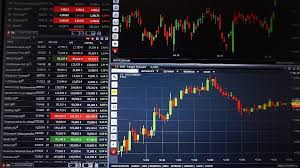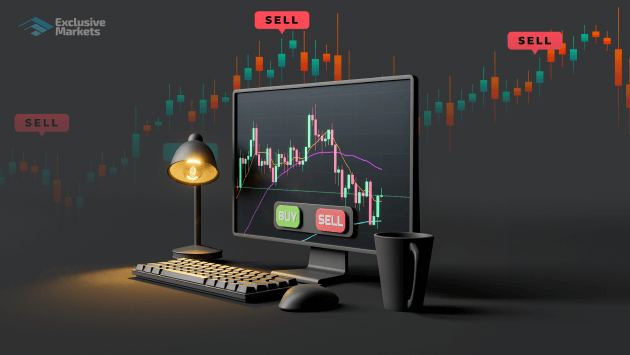
In the world of Forex trading, your trading account may well be your most valuable asset. Understanding how to choose and manage a forex trading account Trading Brokers account is critical for maximizing your potential on the foreign exchange market. This article aims to provide a comprehensive overview of Forex trading accounts, covering types of accounts, the account setup process, trading strategies, and tips for successful trading.
What is a Forex Trading Account?
A Forex trading account is essentially a digital account where traders can buy and sell currencies. These accounts are offered by brokers and can be categorized into several types based on the trader’s needs, trading style, and experience level. By leveraging these accounts, traders can access real-time market data, leverage their investments, and execute trades efficiently.
Types of Forex Trading Accounts
There are various types of trading accounts available in the Forex market, each designed to cater to different trading styles and investment amounts. Here are some of the most common types:
- Standard Accounts: These accounts are typically designed for seasoned traders who have a significant amount of capital to invest. They usually require a higher minimum deposit and provide access to a broader range of trading tools.
- Mini Accounts: Mini accounts allow traders to trade smaller amounts, making them a suitable option for beginners who want to test the waters without risking large sums of money.
- Micro Accounts: Similar to mini accounts, micro accounts allow for even smaller trades. They are ideal for novice traders who wish to practice trading strategies and learn about market dynamics without the pressure of significant financial risk.
- Cent Accounts: Cent accounts are unique in that they allow traders to trade in cents rather than dollars. This type of account is particularly useful for beginners who want to gain experience in a non-pressured environment.
- Islamic Accounts: For traders who follow Islamic finance principles, brokers often offer Islamic accounts that comply with Sharia law, meaning they do not involve interest or other prohibited activities.

Setting Up Your Forex Trading Account
The process of setting up a Forex trading account is relatively straightforward but requires careful consideration. Here are some steps to follow:
- Choose a Reputable Broker: Research and select a broker that fits your trading needs. Look for factors such as regulations, user reviews, trading platform, and fees.
- Complete the Application: Most brokers have an online application form that requires personal information such as your name, address, and trading experience.
- Verify Your Identity: To comply with regulatory requirements, brokers will usually ask for identification documents, such as a passport or utility bill, to verify your identity.
- Fund Your Account: Once your application is approved, you will need to deposit funds into your account. Most brokers offer multiple funding methods, including bank transfers, credit/debit cards, and e-wallets.
- Start Trading: After your account is funded, you can start accessing the trading platform to make trades. Familiarize yourself with the tools and features available on the platform.
Forex Trading Strategies
Having a well-defined trading strategy is essential for success in Forex trading. Here are some strategies to consider:
- Scalping: This strategy involves making numerous small trades throughout the day to capitalize on minor price movements.
- Day Trading: Day traders open and close their positions within the same trading day to avoid overnight risk. This requires constant monitoring of the market.
- Swing Trading: This strategy focuses on capturing price swings over a period of days or weeks, allowing traders to take advantage of broader market trends.
- Position Trading: Position traders typically hold onto their trades for longer periods, making decisions based on long-term market trends.
Risk Management in Forex Trading
Managing risk is paramount in Forex trading. Effective risk management can make the difference between long-term success and failure. Here are some fundamental strategies:
- Set Stop-Loss Orders: A stop-loss order is a predetermined price point at which a trade will be closed to limit losses. Establishing this in advance can prevent emotional trading decisions.
- Use Proper Leverage: Leverage can amplify both profits and losses. Use it wisely, and avoid over-leveraging your trades.
- Diversification: Spread your investments across multiple trades rather than concentrating all your capital in one position.
- Regularly Review Your Performance: Keep track of your trades and analyze your performance to identify areas for improvement.
Choosing the Right Broker for Your Forex Trading Account
Selecting the right broker is crucial for your trading success. Here are some key factors to consider:
- Regulatory Compliance: Ensure that the broker is regulated by a reputable regulatory authority, which signifies its trustworthiness.
- Trading Platforms: The broker should offer a user-friendly trading platform with various technical analysis tools and access to market news.
- Fees and Spreads: Pay attention to the spreads and any additional fees associated with trading in different account types, as these costs can impact your profitability.
- Customer Support: Look for brokers that offer reliable customer support to address any issues that may arise during your trading experience.
Final Thoughts
A Forex trading account is the gateway to accessing the vast and dynamic world of currency trading. Understanding your options, choosing the right account type, and developing a solid trading strategy are vital steps toward achieving your trading goals. Additionally, implementing robust risk management practices and selecting a reputable broker can significantly enhance your trading success. Remember, the Forex market can be both rewarding and challenging, so continuous learning and adaptation are key components of a successful trading journey.
